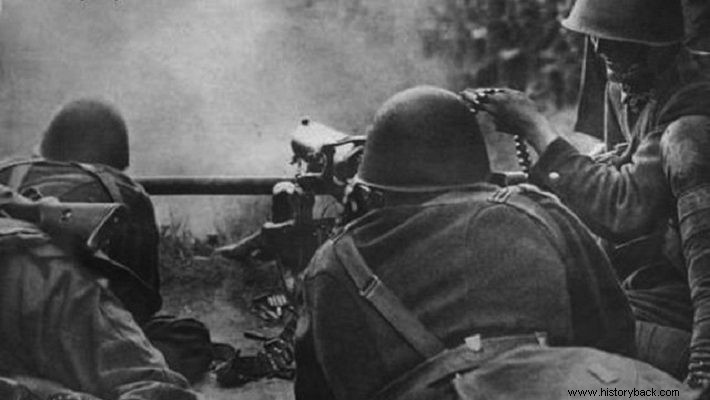
As German troops invaded Poland in September 1939, a Polish captain 60 km behind the front line knew the time had come for the all-out fight. Captain Vladislav Raginis commanded a reinforced battalion-level force in the Vizna region. Raginis came from a family of landowners and was of Latvian descent. He served in the Polish border guard forces. He was responsible for the defense in the fortified area of Vizna on the border with East Prussia. When the Germans invaded Poland Raginis had a force of about 800 men armed with 6 old Russian 76.2 mm field guns, two anti-tank rifles and 42 machine guns.
This force was deployed in a series of machine guns and patrols (defensive works with a machine gun and an anti-tank weapon or cannon). However, when the war broke out, these fortification projects had not been completed in their entirety. Besides, even if they were complete, they did not provide the small garrison with serious possibilities of resistance against the expected German paver. Raginis hoped that he could slow down the German forces for a time. Little did he know that he had before him the entire German IXI Army Corps of General Heinz Gunderian, the "father" of Panzers, with his 40,000 soldiers, his 350 tanks and his 657 guns and mortars. Guderian's mission was to split the Polish defenses from East Prussia and advance from north to south to cut off all the Polish forces fighting west of the Vistula. After six days of fighting the Germans reached the Narev River at the height of Vyzna. Raginis' time had come.
The Battle of Vizna
Early on the morning of September 7, Polish cavalry patrols spotted German tanks moving towards Wizna. The cavalry informed Raginis who prepared his forces. The Germans easily captured her town of Vizna, on the west bank of the river. However, the Poles caught up and blew up the only bridge that led to the east bank. The Germans stopped. Aerial reconnaissance showed that there was a line of fortifications and trenches about 6 km inside the eastern bank. But they could not know the number of Poles and their armament.
As night fell German infantry attempted to cross the river. Looking for a passable point, as there were many marshes in the area, the Germans literally ran into a Polish machine gun and the battle was on! Suffering serious losses, the Germans retreated badly. At the first light of the next day, German aircraft appeared but only issued announcements in Polish calling on the defenders to surrender. Raginis and the deputy commander, Lieutenant Brikalski, then visited all the positions and promised their soldiers that neither of them would leave the defense site alive. Every centimeter of Polish territory occupied by the Germans was to be drenched in the blood of the invaders. Later the German planes returned but this time loaded with bombs which they dropped on the Polish positions.
At the same time, the German artillery and mortars participated in the preparation. Their first target was two isolated gun emplacements to the north which were almost surrounded, being attacked from three sides. The Poles put up a vigorous defense. However, their only two platoons defending the sector could not hold out indefinitely. Fate forced them to retreat. In the other sectors, however, and thanks to the marshes, the Germans were either immobilized or moving at a turtle's pace. The Poles, with rifles and machine guns, concentrated against them and caused them serious losses. With the support of their tanks, however, the Germans began to gain ground. The Poles were forced to abandon all non-gun fighting positions, but continued to defend themselves vigorously from their strongholds.
Until the end
By nightfall the German tanks had passed behind the Polish position. But not the German infantry! Raginis was informed in the meantime that there was no chance of reinforcements or attempts to break the German line. Meanwhile the battle continued. The Germans destroyed the Polish machine guns one by one with direct fire from their tank guns. By the morning of September 10 only two artillery pieces were still defending. A German soldier was then introduced holding a white flag. Raginis had to decide. He had no hope, and to continue fighting would only mean the death of all his fearless men. Ammunition was running out and the wounded were suffering.
All he could expect was that they would all be blown up by the German guns quite pointlessly or executed if they surrendered later, as the Germans had threatened. He decided to stop resisting. Even though he was seriously injured, he would keep his promise. After ordering his men to lay down their arms, he killed himself with a grenade. Out of 720 Poles only 70 survived. Some of them managed to escape from captivity. Others, captives, were executed, others were savagely beaten and suffered many humiliations. It is unknown how many of them ultimately survived. German losses were heavy. Guderian admits 900 dead. The Poles also destroyed 10 German tanks and many more armored vehicles. Not without reason, they still characterize the battle of Vizna as "Polish Thermopylae"...
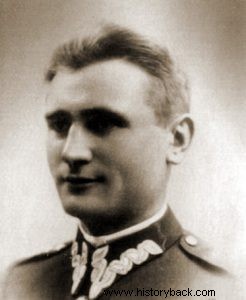
The heroic Polish captain Władysław Raginis.

The battle of Vizna.
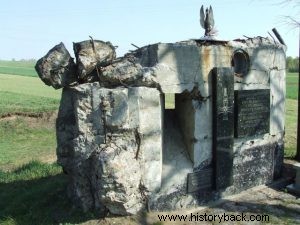
Damaged Polish machine gun as it stands today.
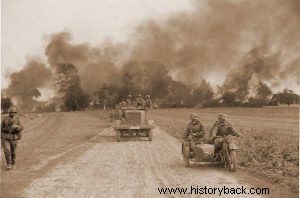
German forces in Vizna.
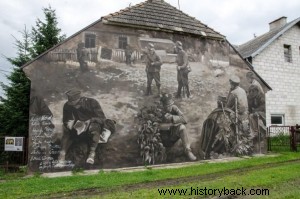 80
80
